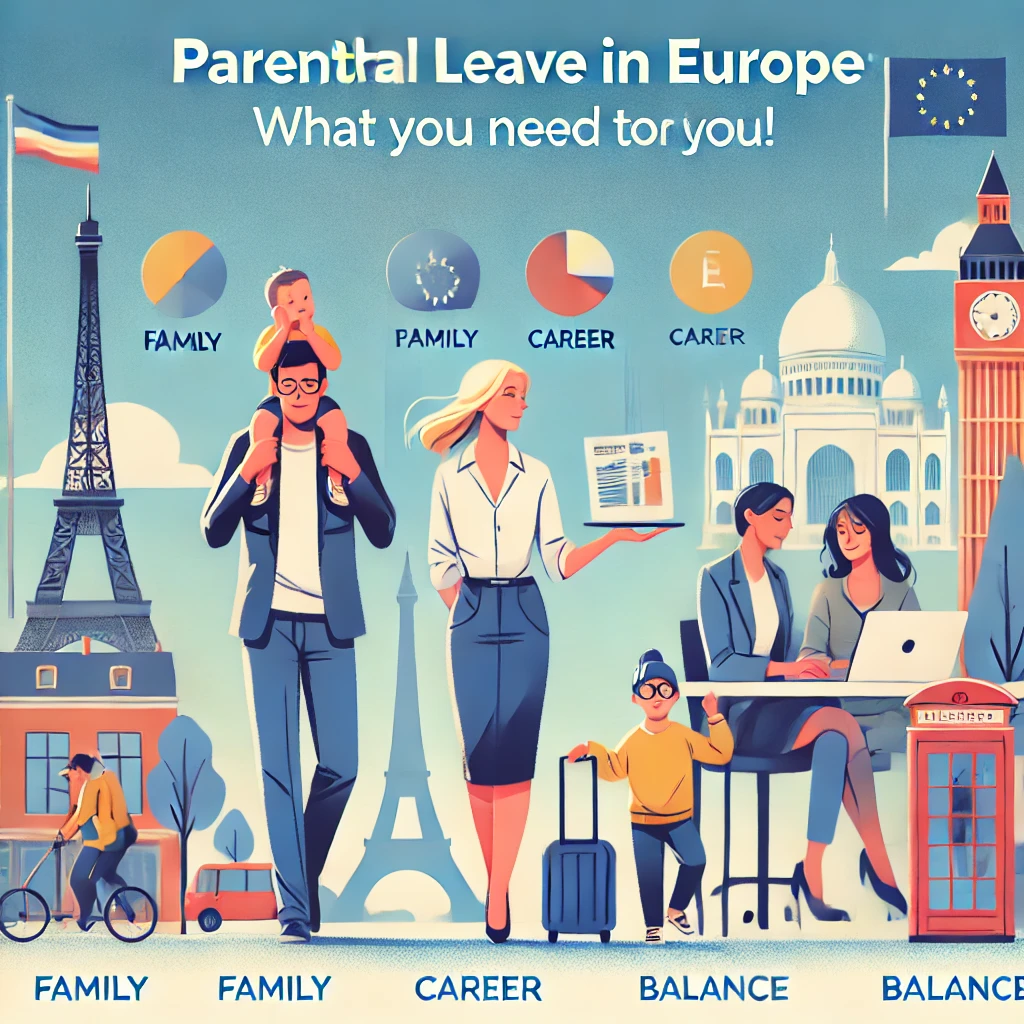Parental Leave Policies in Europe

When you are considering a career move to Europe, knowing about parental leave policies in Europe is important, especially for those with families or plans to start one. This guide will help you understand the different parental leave policies in Europe. It highlights the variations in benefits, the duration of leaves, and how different countries support families.
1. EU Minimum Standards for Parental Leave in Europe
The European Union (EU) sets minimum standards for parental leave to support a better work-life balance.
- Parental Leave: Every parent is entitled to at least four months of leave. At least two of these months are non-transferable, which means one parent cannot give them to the other. Each country decides how much to compensate these months. This rule will be fully applied by August 2024 (European Commission).
- Paternity Leave: Fathers or second parents get 10 working days of paid leave around the child’s birth. The payment must be equal to the national sick pay level (European Commission).
- Flexible Work Options: In addition, parents with children up to 8 years old can request flexible working arrangements. These include reduced hours, flexible schedules, or remote work (European Commission).
2. Scandinavia: Leading in Family-Friendly Policies
Scandinavian countries offer some of the best parental leave policies in Europe.
- Sweden: For example, parents receive 480 days of leave per child. The policy includes a “daddy quota” of 90 days reserved for fathers, which promotes equal caregiving roles. As a result, parents get 80% of their salary for the first 390 days (European Institute for Gender Equality).
- Norway: Meanwhile, Norway offers two options: 49 weeks at full pay or 59 weeks at 80% pay. Fathers have a “daddy quota” of 15 weeks to ensure they share in childcare (European Institute for Gender Equality).
3. Western Europe: Diverse Benefits
Western European countries provide different parental leave policies.
- Germany: First, parents can share up to 14 months of leave. They receive a parental allowance called “Elterngeld,” which covers 65-67% of their income (European Institute for Gender Equality).
- France: Next, France offers 16 weeks of maternity leave and 28 days of paternity leave. In addition, parents may also take unpaid leave until the child is three years old (European Institute for Gender Equality).
4. Eastern Europe: Long Leaves, Lower Compensation
Eastern European countries provide long parental leaves; however, compensation varies.
- Poland: For instance, Poland provides 52 weeks of leave, including 20 weeks for maternity, 6 weeks for paternity, and 26 weeks of shared leave. The pay rates differ (European Institute for Gender Equality).
- Hungary: Similarly, Hungary gives 24 weeks of maternity leave at 70% pay. Childcare benefits continue until the child is two years old (European Institute for Gender Equality).
- Romania: In Romania, mothers receive 126 days of maternity leave at 85% of their salary. In addition, parental leave can last up to 2 years at 85% of the average income (European Institute for Gender Equality).
5. Southern Europe: Moving Toward Equality
Southern Europe is improving its parental leave policies:
- Spain: Spain now provides 16 weeks of fully paid leave for both parents. This leave can extend for multiple births or adoption (European Institute for Gender Equality).
- Italy: On the other hand, Italy offers 5 months of paid maternity leave at 80% of salary and 10 days of paternity leave. Additional parental leave of up to 10 months is also available (European Institute for Gender Equality).
6. The United Kingdom: Flexible but Lower Pay
- UK: Finally, the UK allows up to 52 weeks of maternity leave. The first 6 weeks are paid at 90% of salary, and the rest at a lower rate. Paternity leave is 2 weeks, and Shared Parental Leave lets parents share up to 50 weeks (European Institute for Gender Equality).
Conclusion: Understanding Parental Leave Policies in Europe
Understanding parental leave policies in Europe is essential for job seekers with families. Therefore, the EU provides a foundation, but each country has its own benefits. To find the best fit for your family, explore our full guide on SeeWander.com.
